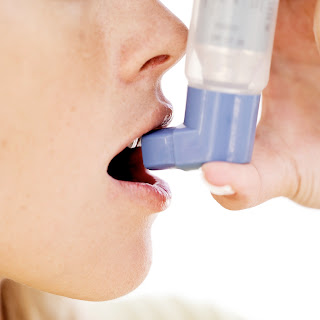ASTHMA POLICY FOR YOUTH FOOTBALL CLUBS
Policy Statement
This club is committed to:
q Providing the necessary procedures to ensure the health and safety of all persons with asthma involved with the club
q Raising the awareness of asthma amongst those involved with the club
q Providing an environment in which young people with asthma can participate in all activities to their full potential
Purpose
The aim of this policy is to document strategies for implementation of best practice asthma management within a sporting environment so that:
q All children enrolled at the club who have asthma can receive appropriate emergency attention as required
Implementation
Asthma management should be viewed as a shared responsibility. To this end, each of the key groups within this club gives the following undertaken:
q Identifying children with asthma during the enrolment process. This information needs to be documented appropriately and maintained as part of the child’s club record
q Promptly communicating any concerns to the parents / carers if they are worried about the child’s asthma limiting his / her ability to participate fully in all activities
q Encouraging children of appropriate age and ability to self-manage their asthma, including the use of their reliever medication as soon as symptoms develop
q Displaying Asthma First Aid posters in key locations within the club
q Ensuring that all regularly prescribed asthma medication is administered in accordance with the child’s asthma care plan
q Identifying and, where possible, minimising asthma triggers
q Ensuring that parents / carers of a child with asthma have been provided with a copy of this policy
q Providing families with the contact details of Asthma UK if further asthma advice is needed
The parents / carers are responsible for:
q Informing the club management upon enrolment (or upon initial diagnosis) that their child has asthma
q Providing all relevant information regarding their childs asthma via the Asthma Care Plan. Asthma Care Plans should be updated at least annually.
q Notifying the team coach in writing of any changes to the Asthma Care Plan, if this occurs during the year.
q Providing an adequate supply of appropriate medication (reliever) and a spacer device if appropriate. These need to be clearly labelled with the child’s name.
q Communicating all relevant information about a child’s asthma as and when the need arises (eg if asthma symptoms were present during the night before a match or training session).
q Reading and being familiar with this policy.
Authorisation
This policy was considered and accepted by the following on (date)
__________________________________
……………………………………. ………………………………………….
Club Chairman Club Secretary
…………………………………….. …………………………………………..
Club Welfare Officer Club Asthma Champion
Review
This policy will be reviewed annually by the Club Committee
The review process will assess whether the policy has achieved its purpose by:
· Taking into account feedback from all parties regarding the effectiveness of the policy
· Reviewing the adequacy of staff response to an emergency if one has occurred during the previous year
A PDF / Word copy of this doccument is available by e-mail : Contact
asthmafriendlyfc@gmail.com
CHECK LIST FOR TEAM MANAGERS IN
ASTHMA FRIENDLY FOOTBALL CLUBS
Ø Do you know which players in your team suffer from asthma?
Ø Do you have a completed Asthma Action Card (or Medical Conditions Proforma) for all of the children that suffer from asthma?
Ø Do you have a safe box in which inhalers are kept during matches and training sessions (and is this kept by the field of play)?
Ø Do you ensure that those children in your team who suffer with asthma always bring their inhalers to matches and to training sessions (or do you have a spare inhaler for them that has been provided to you by their parents)?
Ø Have all of the parents of children that suffer with asthma that are in your team been given a copy of the club’s Asthma Policy?
Ø Do you know which trigger factors are likely to be relevant to the children that suffer with asthma in your team?
Ø Have you watched the training video that is available on the Asthma Friendly Football Clubs’ website?
A PDF / Word copy of this doccument is available by e-mail : Contact asthmafriendlyfc@gmail.com








